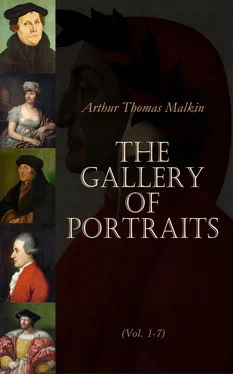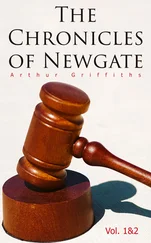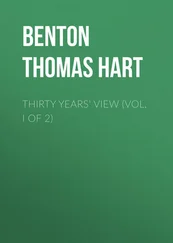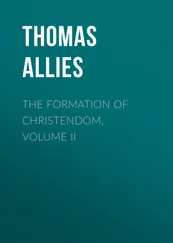In that year the ‘Exercitatio Anatomica de Motu Cordis et Sanguinis’ was published at Frankfort. This masterly treatise begins with a short outline and refutation of the opinions of former anatomists on the movement of the animal fluids and the function of the heart; the author discriminating with care, and anxiously acknowledging the glimpses of the truth to be met with in their writings; as if he had not only kept in mind the justice due to previous discoveries, and the prudence of softening the novelty and veiling the extent of his own, but had foreseen the preposterous imputation of plagiarism, which, with other inconsistent charges, was afterwards brought forward against him. This short sketch is followed by a plain exposition of the anatomy of the circulation, and a detail of the results of numerous experiments; and the new theory is finally maintained in a strain of close and powerful reasoning, and followed into some of its most important consequences. The whole argument is conducted in simple and unpretending language, with great perspicuity, and scrupulous attention to logical form.
The doctrine announced by Harvey may be briefly stated thus:—
When the blood supplied for the various processes which are carried on in the living body has undergone a certain degree of change, it requires to be purified by the act of respiration. For this purpose it is urged onwards by fresh blood from behind into the veins; and returning in them from all parts of the body, enters a cavity of the heart called the right auricle . At the same time the purified blood returning from the lungs by the pulmonary veins, passes into the left auricle . When these two cavities, which are distinct from each other, are sufficiently dilated, they contract, and force the blood which they contain into two other much more muscular cavities called respectively the right and left ventricle , all retrogression into the auricles being prevented by valves, which admit of a passage in one direction only. The ventricles then contract in their turn with great force, and at the same instant; and propel their blood, the right, by the pulmonary artery into the lungs; the left, which is much the stronger of the two, into all parts of the body, by the great artery called the aörta , and its branches; all return being prevented as before by valves situated at the orifices of those vessels, which are closed most accurately when the ventricles relax, by the backward pressure of the blood arising from the elasticity of the arteries. Thus the purified blood passes from the lungs by the pulmonary veins through the left auricle into the ventricle of the same side, by which it is distributed into all parts of the body, driving the vitiated blood before it; and the vitiated blood is pushed into and along the veins to the right auricle, and thence is sent into the right ventricle, which propels it by the pulmonary artery through the lungs. In this manner a double circulation is kept up by the sole agency of the heart, through the lungs, and through the body; the contractions of the auricles and ventricles taking place alternately. To prevent any backward motion of the blood in the superficial veins, which might happen from their liability to external pressure, they are also provided with simple and very complete valves which admit of a passage only towards the heart. They were first remarked by Fabricius ab Aquapendente, and exhibited in his lectures to Harvey among the rest of his pupils; but their function remained a mystery till it was explained by the discovery of the circulation. It is related by Boyle, upon Harvey’s own authority, that the first idea of this comprehensive principle suggested itself to him when considering the structure of these valves.
The pulmonary circulation had been surmised by Galen, and maintained by his successors; but no proof even of this insulated portion of the truth, more than amounted to strong probability, had been given till the time of Harvey; and no plausible claim to the discovery, still less to the demonstration, of the general circulation has ever been set up in opposition to his. Indeed its truth was quite inconsistent with the ideas everywhere entertained in the schools on the functions of the heart and other viscera, and was destructive of many favourite theories. The new doctrine, therefore, as may well be supposed, was received by most of the anatomists of the period with distrust, and by all with surprise. Some of them undertook to refute it; but their objections turned principally on the silence of Galen, or consisted of the most frivolous cavils: the controversy, too, assumed the form of personal abuse even more speedily than is usually the case when authority is at issue with reason. To such opposition Harvey for some time did not think it necessary to reply; but some of his friends in England, and of the adherents to his doctrine on the Continent, warmly took up his defence. At length he was induced to take a personal share in the dispute in answer to Riolanus, a Parisian anatomist of some celebrity, whose objections were distinguished by some show of philosophy, and unusual abstinence from abuse. The answer was conciliatory and complete, but ineffectual to produce conviction; and in reply to Harvey’s appeal to direct experiment, his opponent urged nothing but conjecture and assertion. Harvey once more rejoined at considerable length; taking occasion to give a spirited rebuke to the unworthy reception he had met with, in which it seems that Riolanus had now permitted himself to join; adducing several new and conclusive experiments in support of his theory; and entering at large upon its value in simplifying physiology and the study of diseases, with other interesting collateral topics. Riolanus, however, still remained unconvinced; and his second rejoinder was treated by Harvey with contemptuous silence. He had already exhausted the subject in the two excellent controversial pieces just mentioned, the last of which is said to have been written at Oxford about 1545; and he never resumed the discussion in print. Time had now come to the assistance of argument, and his discovery began to be generally admitted. To this indeed his opponents contributed by a still more singular discovery of their own, namely, that the facts had been observed, and the important inference drawn long before. This was the mere allegation of envy, chafed at the achievements of another, which, from their apparent facility, might have been its own. It is indeed strange that the simple mechanism thus explained should have been unobserved or misunderstood so long; and nothing can account for it but the imperceptible lightness as well as the strength of the chains which authority imposes on the mind.
In the year 1623 Harvey became Physician Extraordinary to James I., and seven years later was appointed Physician to Charles. He followed the fortunes of that monarch, who treated him with great distinction, during the first years of the civil war, and he was present at the battle of Edgehill in 1642. Having been incorporated Doctor of Physic by the University of Oxford, he was promoted by Charles to the Wardenship of Merton College in 1645; but he did not retain this office very long, his predecessor Dr. Brent being reinstated by the parliament after the surrender of Oxford in the following year.
Harvey then returned to London and resided with his brother Eliab at Cockaine-house in the Poultry. About the time of Charles’s execution he gave up his practice, which had never been considerable, probably in consequence of his devotion to the scientific, rather than the practical parts of his profession. He himself, however, attributed his want of success to the enmity excited by his discovery. After a second visit to the Continent, he secluded himself in the country, sometimes at his own house in Lambeth, and sometimes with his brother Eliab at Combe in Surrey. Here he was visited by his friend Dr. Ent in 1651, by whom he was persuaded to allow the publication of his work on the Generation of Animals. It was the fruit of many years of experiment and meditation; and though the vehicle of no remarkable discovery, is replete with interest and research, and contains passages of brilliant and even poetical eloquence. The object of his work is to trace the germ through all its changes to the period of maturity; and the illustrations are principally drawn from the phenomena exhibited by eggs in the process of incubation, which he watched with great care, and has described with minuteness and fidelity. The microscope had not at that time the perfection it has since attained; and consequently Harvey’s account of the first appearance of the chick is somewhat inaccurate, and has been superseded by the observations of Malpighi, Hunter, and others. The experiments upon which he chiefly relied in this department of natural history had been repeated in the presence of Charles I., who appears to have taken great interest in the studies of his physician.
Читать дальше












